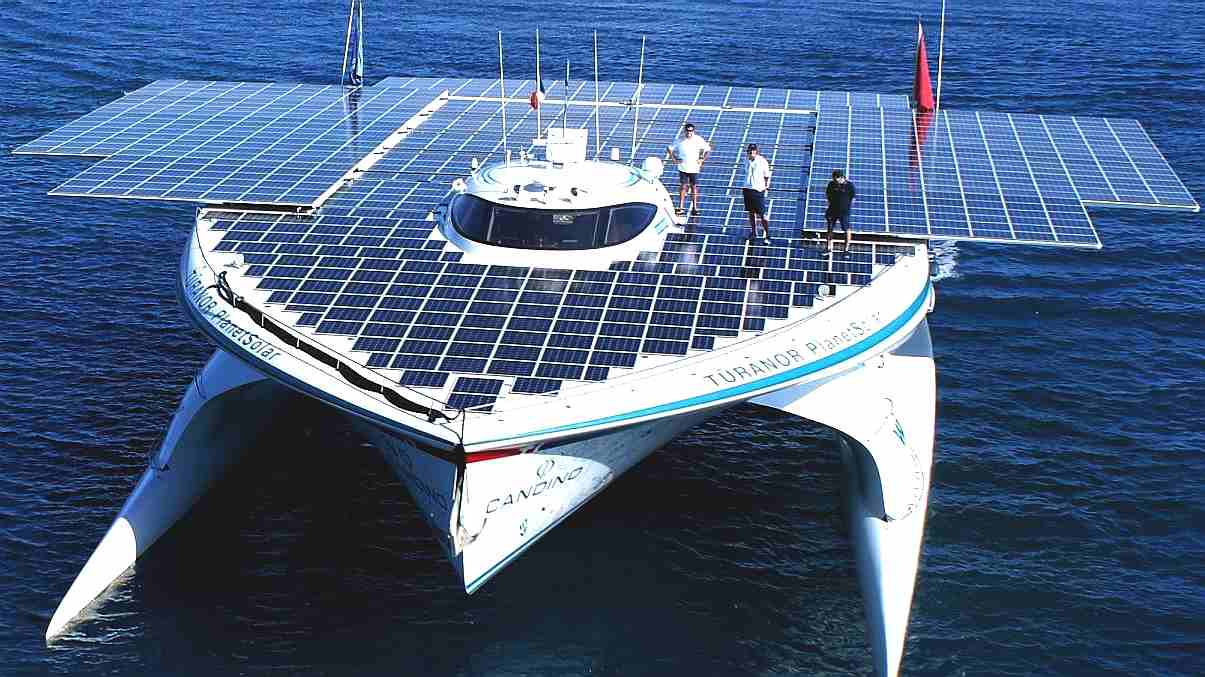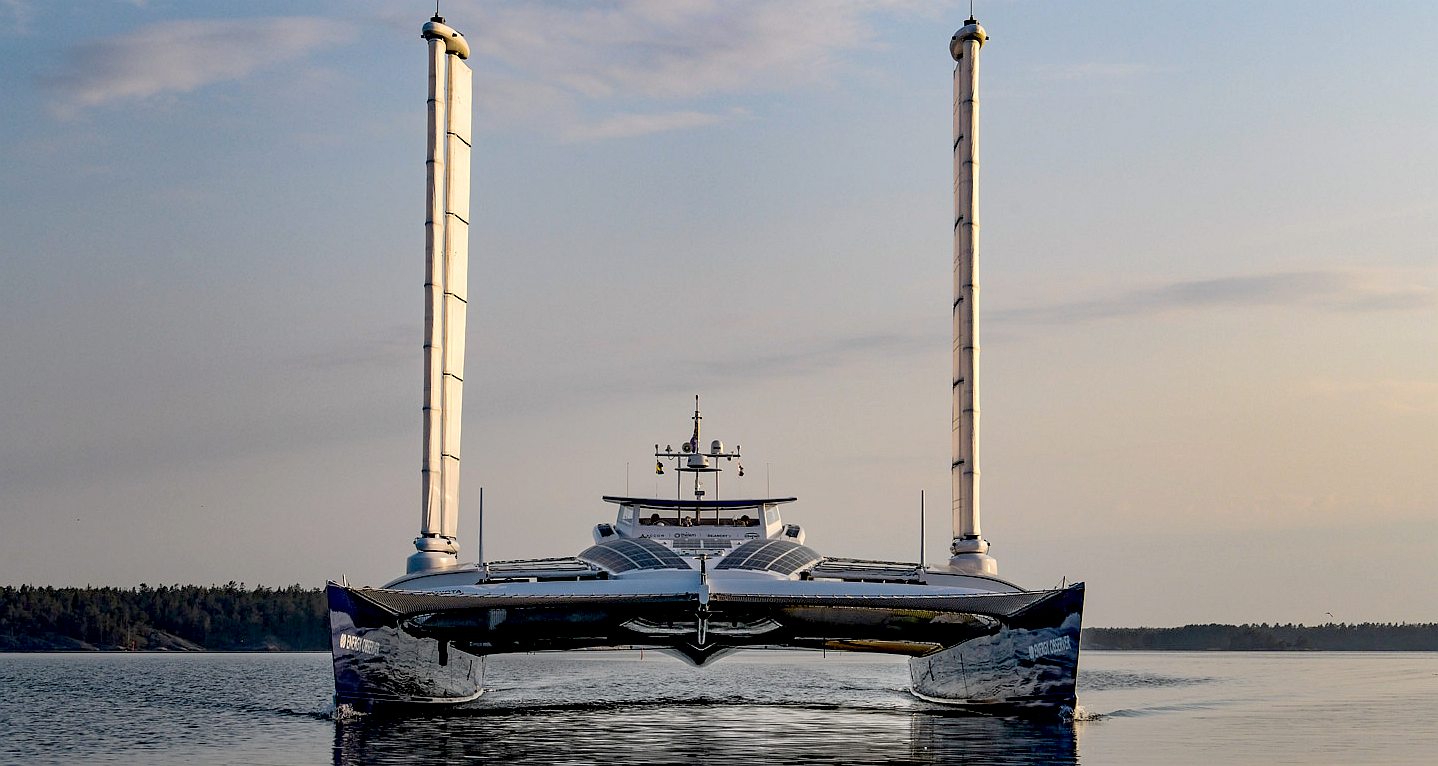|
ZEWT - ZERO EMISSION WATERBOURNE TRANSPORT
Please use our A-Z INDEX to navigate this site or return HOME |
|||
|
ZEWT - SOLAR + HYDROGEN: Solar power is a proven means of traversing the oceans, but slowly. We aim to improve the conversion efficiency from sun and wind to propulsive thrust - using a revolutionary hull design. Wind power is also a proven technology, but again, with disadvantages. Sails cannot load-level. A rotary sail (turbine) does so by generating electricity and storing it in the latest batteries, with hydrogen hybrid potential, and up to 4000nm on hydrogen alone. As an experimental vessel, the design is modular, to allow bolt-on modification to the rig. Including swapping hydrogen tanks, as development continues.
We aim to build a visually stunning vessel that is capable of demonstrating ocean clean tech and set a few records into the bargain - to prove the point. The Elizabeth Swann is shown here with a wave piercing hull. She is of trimaran configuration, 44 meters long with active outrigger hulls (or sponsons) that allow the vessel to trim for very efficient running - the first in the world with that feature. She has solar wings that fold for storms and track the sun, and the wind turbine, HAWT or VAWT, can be raised on a mast and furled in high winds, all robotically controlled using hydraulics from Flowfit. This forms a genuine dual-energy harvesting system ideal for workboats and coastal ferries. The Swann features the very latest 'Deep Speed' electric jet drives from 'Sealence' in Italy, and SuperVawt turbine, to show just how silent solar powered yachting can be. We are in the process of sourcing solar panels and lithium batteries, and are closing on the construction phase.
|
|||
SOLAR HYDROGEN - The 'Energy Observer' is a floating laboratory, converted from an ocean racing yacht, powered by sails, to solar and sail power, with onboard hydrogen generation and storage. At present this little beauty is slower than PlanetSolar below, the subject of ongoing development, not yet a ZEWT contender. The collapsible sails contribute around 5% of propulsive force.
|
|||
|
|||
|
|
|||
|
Join us for a voyage into the nautical unknown where the Queen of the Seas is a zero carbon vessel that harvests all the energy she needs for propulsion - from nature. Philanthropists and Patrons, may like to view our outline Business Plan. We work with our supporters to augment this exciting opportunity.
|
|||
|
|
|||
|
|||
|
|
|||
|
TEAM BUILDING - We are building a consortium (Jet drives, Hydraulics), embracing complimentary partners (Hull fabrication, solar panels, batteries, shipboard robotics and Navigation AI). Please contact the Foundation with your interest. Commercial sponsors are welcome. The current solar powered record holder is the Tūranor PlanetSolar, below.
|
|||
|
|
|||

|
|||
|
HOW TO MAKE A DREAM COME TRUE - It starts with an idea, persistent development, and most importantly: backers with vision. The Turanor PlanetSolar was a purpose built vessel supported by a team dedicated to making it happen. And happen it did.
Please use our A-Z INDEX to navigate this site
This website is Copyright © 2021 Cleaner Ocean Foundation Ltd, an equal opportunities company. This website is carbon friendly, using less energy to load on average per page via simplicity & picture optimization. The same may not apply to third party links.
|

